Balkinization
an unanticipated consequence of
Jack M. Balkin
Balkinization Symposiums: A Continuing List
E-mail:
Jack Balkin:
jackbalkin at yahoo.com
Bruce Ackerman
bruce.ackerman at yale.edu
Ian Ayres
ian.ayres at yale.edu
Corey Brettschneider
corey_brettschneider at brown.edu
Mary Dudziak
mary.l.dudziak at emory.edu
Joey Fishkin
joey.fishkin at gmail.com
Heather Gerken heather.gerken at yale.edu
Abbe Gluck abbe.gluck at yale.edu
Mark Graber
mgraber at law.umaryland.edu
Stephen Griffin
sgriffin at tulane.edu
Jonathan Hafetz
jonathan.hafetz at shu.edu
Jeremy Kessler
jkessler at law.columbia.edu
Andrew Koppelman
akoppelman at law.northwestern.edu
Marty Lederman
msl46 at law.georgetown.edu
Sanford Levinson
slevinson at law.utexas.edu
David Luban
david.luban at gmail.com
Gerard Magliocca
gmaglioc at iupui.edu
Jason Mazzone
mazzonej at illinois.edu
Linda McClain
lmcclain at bu.edu
John Mikhail
mikhail at law.georgetown.edu
Frank Pasquale
pasquale.frank at gmail.com
Nate Persily
npersily at gmail.com
Michael Stokes Paulsen
michaelstokespaulsen at gmail.com
Deborah Pearlstein
dpearlst at yu.edu
Rick Pildes
rick.pildes at nyu.edu
David Pozen
dpozen at law.columbia.edu
Richard Primus
raprimus at umich.edu
K. Sabeel Rahmansabeel.rahman at brooklaw.edu
Alice Ristroph
alice.ristroph at shu.edu
Neil Siegel
siegel at law.duke.edu
David Super
david.super at law.georgetown.edu
Brian Tamanaha
btamanaha at wulaw.wustl.edu
Nelson Tebbe
nelson.tebbe at brooklaw.edu
Mark Tushnet
mtushnet at law.harvard.edu
Adam Winkler
winkler at ucla.edu
Compendium of posts on Hobby Lobby and related cases
The Anti-Torture Memos: Balkinization Posts on Torture, Interrogation, Detention, War Powers, and OLC
The Anti-Torture Memos (arranged by topic)
Recent Posts
The Radical Fund – An Historian’s Brief For Social Democracy
New Draft Essay on Birthright Citizenship
Putting labor, civil rights, and civil liberties at the center of the American story
Three Views of the Carnival
The Radical Fund Behind Brown
Balkinization Symposium on John Witt, The Radical Fund
What’s Louisiana v. Callais About? Not Louisiana.
Why a President Might Decline to Appeal
The Legality of the Friday Night Massacre
Just A Few Blogs
ACS Blog
Alas, a Blog
Althouse
Arts and Letters Daily
Atrios (Eschaton)
Bill of Health
Buzzflash.com
Buzz Machine
Cato at Liberty
Juan Cole (Informed Comment)
Concurring Opinions
The Constitution in 2020
Corrente
Crooked Timber
Daily Howler
Daily Kos
Dana Boyd
Brad DeLong
Digby (Hullabaloo)
Discriminations
Daniel Drezner
Kevin Drum (Mother Jones)
Electrolite
En Banc
Eunomia (Daniel Larison)
Fafblog
Michael Froomkin (Discourse.net)
GovLab (Beth Noveck)
Rick Hasen (Election Law)
History News Network
How Appealing
Ignatz (Sam Heldman)
The Importance of (Ernie Miller)
Infolaw
Instapundit
International Economic Law and Policy Blog
IntLawGrrls
Jacob Levy
Jesus' General
Jurisdynamics
The Kitchen Cabinet
Mark Kleiman
Law Blog Central
Larry Lessig
Lawyers, Guns and Money
Liberal Oasis
Brian Leiter's Law School Reports
The Leiter Reports
Marginal Revolution
Megan McArdle
Memeorandum
Metafilter
Mirror of Justice
The New Republic
Newseum
No More Mister Nice Blog
Brendan Nyhan
Opinio Juris
Orcinus
The Originalism Blog
Pandagon
Passport (Foreign Policy)
Overcoming Bias
Political Animal (Washington Monthly)
Political Theory Daily Review
Political Wire (Taegan Goddard)
The Poor Man
Virginia Postrel
Prawfsblawg
Public Reason
Jonathan Rauch
Raw Story
Redstate
ReligiousLeftLaw.com
Reporters Committee For Freedom of the Press
Reproductive Rights Blog
Rothman's Roadmap to the Right of Publicity
SCOTUS Blog
Seeing the Forest
Clay Shirky
The Shifted Librarian
The Situationist
Larry Solum (Legal Theory)
Andrew Sullivan
Talking Points Memo
Talk Left
Tapped
Tbogg
TechPresident
The Paper Chase (Jurist)
Tom Paine
Tom Tomorrow (This Modern World)
Eve Tushnet
Uggabugga
University of Chicago Law School Faculty Blog
Unqualified Offerings
The Volokh Conspiracy
War and Piece (Laura Rozen)
Wampum
Oliver Willis
Wonkette
Written Description
Matthew Yglesias
Yin
Your Choice of Feeds
1. XML
powered by
2. Atom Feed
3. RSS 2.0
The Radical Fund – An Historian’s Brief For Social Democracy
Guest Blogger
For the Balkinization symposium on John Witt, The Radical Fund: How a Band of Visionaries and a Million Dollars Upended America (Simon and Schuster, 2025). Willy Forbath John Witt’s The Radical Fund is a feast. Brimming with narrative energy, the book is
a brilliantly detailed chronicle of the life and times of the Garland Fund’s
directors and counselors along with the individuals and organizations whose
work it sustained. Dozens of famous and
forgotten figures of the broad left of the early 20th century –
activists and organizers, journalists, attorneys, economists and other policy
mavens; liberals and progressives, socialists and social democrats,
syndicalists, anarchists and communists – inhabit the book’s 600-plus pages, as
directors and beneficiaries of the Fund alongside the organizations many of
them founded and led, including three that turned out to be pillars of modern
American liberalism in the decades ahead: the ACLU, the CIO (and the industrial
unions it came to house), and the NAACP.
Witt is equally masterful crafting shrewd and revealing biographical
sketches, recounting dramatic strikes and protests, and conveying the stakes of
intricate organizational conflicts and the genealogy of complex ideas – all in
pithy and often sparkling prose. Still, one could fill a small library with books about these
people and organizations. What is to be
gained from a new one that attends to the outfit that funded them? A great deal is the answer. Read more »
Posted
9:30 AM
by Guest Blogger [link]
New Draft Essay on Birthright Citizenship
Gerard N. Magliocca
This will be part of an issue of the Harvard Journal of Law and Public Policy starring articles by Ilan Wurman and Keith Whittington. My essay is the (much shorter) third wheel, but here's the Abstract:This Essay argues that the invocations of the gypsies (or Roma) during the debates on the Civil Rights Act of 1866 and the Citizenship Clause of the Fourteenth Amendment drew on Blackstone's discussion of them in his Commentaries and means that legal immigration status, domicile, and allegiance are not requirements for birth citizenship in the United States. The Roma were barred from entering Britain for centuries, but their native-born children were still considered subjects of the Crown. In 1866, Senator Edgar Cowan argued in Congress that birth citizenship should not apply to gypsies because, among other things, they "have no homes" and "no allegiance." He lost, even though they did paradigmatically lack homes or allegiance to any government. The Roma precedents from common law and from the original public meaning cut sharply against the legality of any effort to restrict birth citizenship.
Posted
9:28 PM
by Gerard N. Magliocca [link]
(0) comments
Putting labor, civil rights, and civil liberties at the center of the American story
Guest Blogger
For the Balkinization symposium on John Witt, The Radical Fund: How a Band of Visionaries and a Million Dollars Upended America (Simon and Schuster, 2025). Risa Goluboff I first encountered the Garland Fund more than 20 years ago,
when Mark Tushnet described the key role the Fund’s “Margold Report” played in
developing the NAACP’s litigation strategy in the 1930s. Drawing on Tushnet’s
work in my own book on pre-Brown attacks on racial and economic
inequality, I used the Margold Report largely as evidence of the NAACP’s
relative disinterest in Black labor and the issues Black workers faced under
Jim Crow. My approach to the Garland Fund was thus fleeting and piecemeal. To
the extent that I noticed the many famous figures involved in the Fund, or that
I was surprised that the Fund had approved the NAACP’s proposal despite the
apparent divergence between the Fund’s focus on labor and the NAACP’s lack
thereof, I did not pursue such leads. Like Tushnet before me, I came at the
Garland Fund from one particular angle: as a small but important part of the NAACP’s
developing legal strategy. How lucky for me, and for us all, that John Witt has now put
the Garland Fund squarely at the center not only of his own story but, in many
ways, of the entire history of the United States in the first half of the
twentieth century. What makes the breadth and ambition of Witt’s book possible is
the breadth and ambition that he has uncovered in the Fund itself: It was
capacious enough to welcome the likes of Roger Baldwin and James Weldon Johnson
and Elizabeth Gurley Flynn and many more. It simultaneously promoted “labor
fairness and racial equality and basic human freedoms” like free speech (541). The
Fund drew on federal Indian law and decades-old anti-Chinese American
discrimination cases to produce the NAACP’s litigation blueprint, and it funded
lawyers in causes as disparate as Ossian Sweet and Scottsboro. Its work ranged from
the United Mine Workers to the Brotherhood of Sleeping Car Porters to the
Amalgamated Clothing Workers of America and ultimately to the origins of the
CIO. It defended everyone from Scopes to Sacco and Vanzetti. Witt shows how the Fund laid the groundwork
for so much of mid-century America’s activism, litigation, political culture,
and reform. In Witt’s telling, the Fund’s impact was a feat of great proportions
for such a small band of activists and intellectuals. And his telling of their
story is its own feat of prodigious historical research, narrative elegance,
and no small contemporary impact.
Posted
9:30 AM
by Guest Blogger [link]
Three Views of the Carnival
David Pozen
Jedediah Britton-Purdy and I have
just published an essay
in the Boston Review that might be of interest to some readers
of this blog. The essay tries to identify and make sense of the three main
competing accounts of the second Trump administration and the current political
moment, which we describe as “authoritarian crisis,” “more of the same,” and “constitutional
regime change.” Along the way, we touch on some familiar Balkinization themes,
including constitutional crisis, constitutional rot, and constitutional moments.
There is no paywall.
Posted
11:40 AM
by David Pozen [link]
The Radical Fund Behind Brown
Guest Blogger
For the Balkinization symposium on John Witt, The Radical Fund: How a Band of Visionaries and a Million Dollars Upended America (Simon and Schuster, 2025). Michelle Adams
John Fabian Witt’s terrific new book, The Radical
Fund: How a Band of Visionaries and a Million Dollars Upended America, explores
critical and urgent moral terrain—the “distinctly modern struggle for
democratic power.” Witt tells a powerful and underappreciated story of the
extraordinary experiment of the American Fund for Public Service—the so-called
Garland Fund—and its wager that radical philanthropy might become a lever for
social transformation. The story opens with Charles Garland’s decision in 1920 to
give away the inheritance he deemed morally tainted. Roger Baldwin, soon to be
the founder of the ACLU, convinced Garland that his money could seed “a gamble
in human nature,” an experiment in the uses of wealth for democracy. Baldwin
envisioned the Fund not as a conventional foundation but as an engine for
“fundamental transformations”—a tool to challenge “the present means of
producing and distributing wealth.” Baldwin thought the central question of the
time was “how to build democracy for an immense, racial divided country in the
age of inequality, mass production, and mass communications.” Sound familiar?
Posted
9:30 AM
by Guest Blogger [link]
Balkinization Symposium on John Witt, The Radical Fund
JB
This week at Balkinization we are hosting a symposium on John Witt's new book, The Radical Fund: How a Band of Visionaries and a Million Dollars Upended America (Simon and Schuster, 2025). At the conclusion, John will respond to the commentators.
We have assembled a terrific group of commentators, including Michelle Adams (Michigan), David Bernstein (George Mason), Mary Dudziak (Emory), William Forbath (Texas), Brian Galle (Berkeley), Risa Goluboff (Virginia), Jamal Greene (Columbia), Larry Kramer (LSE), David Pozen (Columbia), Aziz Rana (B.C.), Ben Sachs (Harvard), David Schizer (Columbia), and Laura Weinrib (Harvard).
Posted
9:00 AM
by JB [link]
What’s Louisiana v. Callais About? Not Louisiana.
Stephen Griffin
Today the Supreme Court will
hear argument in Louisiana v. Callais, a congressional redistricting
case brought under section 2 of the Voting Rights Act. The litigation started as Robinson v.
Ardoin, a garden-variety case in which plaintiffs argued and the district
court in Baton Rouge found that the state legislature should be required to
create a second “opportunity district” in order to facilitate a racial minority
(in this case African Americans) electing a representative of their choice. Many commentators have speculated that the
Court will use the case to undermine section 2 or even rule it
unconstitutional. As I live in Louisiana, I wish I
had some spicy local knowledge to add to the news coverage. But in truth Callais is not so much
about anything that anyone in Louisiana did wrong. That the case exists at all should be put
down to multiple ill-advised interventions by the Court. Louisiana v. Callais should thus be
retitled Roberts and Rehnquist Courts v. Voting Rights Act. It is very much the Court’s story. The story is about how the Court created
unnecessary complications for a reasonably straightforward intervention by
Congress in 1982 into an untenable situation created by white southerners in
defense of their slipping political power.
It’s quite a story and one that is not easily told – which has led to
multiple articles by journalists saying somewhat weakly that the case is
“complicated.” It’s not just journalists. The Court’s insistence on another round of
oral argument has confused everyone. The
briefs are all over the map, guessing what might have drawn the Court’s
interest. I advance my own guess at the
end of this post. For now, some
exposition. It is useful to see the VRA as a
product of three historical moments (prior to Shelby County, that is). The first was the original adoption of the
law in 1965 under the auspices of the Fifteenth Amendment, aimed largely at
removing obstructions to registration and voting by African Americans in the
South. The second was the rise of the
“preclearance” mechanism – to be sure, this was in the original law, but its
reach was vastly extended by the Court’s 1969 decision in Allen v. Board of
Elections. Henceforth, even redistricting
decisions were subject to review by what was, in effect, an administrative
agency inside the DOJ devoted to maintaining a voting rights equilibrium with
respect to race. And the third was the
rewriting of section 2 in 1982 to, among other things, order courts to focus on
the results of what state and local governments were doing to alter electoral
laws to frustrate advancing minority political power. This third moment requires further
explanation.
Posted
8:50 PM
by Stephen Griffin [link]
Why a President Might Decline to Appeal
Andrew Coan
Historically, the federal government has enjoyed extraordinary success when it appeals adverse district court decisions, with a win rate often exceeding seventy percent. Yet for a President pursuing an aggressive and legally contested policy agenda, refusing to appeal while resisting compliance—what I have called “the appellate void” strategy—can offer distinct strategic benefits. Recent calls by influential MAGA personalities to ignore federal court orders have given this possibility renewed salience. The most significant benefit of the strategy is political rather than legal. By refusing to appeal, the executive branch would strand a dispute in district court, denying higher courts any practical vehicle to intervene. Confronting a single, unknown district judge, rather than the Supreme Court, fundamentally changes the optics of interbranch conflict. The American public knows the Supreme Court as the final arbiter of constitutional meaning. When a President defies the Supreme Court, he challenges the public embodiment of constitutional law itself. To a large and bipartisan majority of the public, such confrontation is likely to be profoundly unsettling. Beyond political optics, the appellate void strategy avoids the risk of creating adverse nationwide precedent. A single district court decision binds no other court. By contrast, a district court decision affirmed by the Supreme Court becomes the supreme law of the land. For an administration advancing legally dubious policies, the risk of transforming one district judge's opinion into nationwide precedent may exceed the benefit of possible reversal on appeal. Ultimately, the strategy serves a broader purpose: normalizing executive refusal to accept judicially enforced legal constraints. Each instance of successful defiance or circumvention of a district court order is likely to make the next act of defiance easier, especially if the administration pays little or no political price. For a fuller explanation, you can read my new paper on the appellate void here.
Posted
8:00 AM
by Andrew Coan [link]
The Legality of the Friday Night Massacre
David Super
Late Friday, the Trump Administration reportedly
fired four thousand federal employees. Details
remain sparse at this writing, which is a problem in its own right. Nonetheless, it appears that, among other
things, the Administration gutted
the Centers for Disease Prevention and Control (CDC) and eliminated
the Office of Special Education. It also
reportedly devastated the Community Development Financial Institutions (CDFI)
Fund. The CDFI Fund is notable as one of
the few programs for which congressional Republicans have been willing to
publicly advocate
with the Administration, presumably because it serves economically
disadvantaged areas in both red and blue states. Friday’s firings, of course, come on top
of the large personnel reductions made at the behest of Elon Musk’s “Department
of Government Efficiency”, the large number of departures resulting from
federal employees opting to leave in response to the “fork in the road” message
this Spring, and the on-going, lower-profile staff reductions being made across
the federal government. Examining the legality of these moves is
important in its own right. It also
provides a useful window on what is happening with the Administration’s
on-going war on the Rule of Law. These
actions are legally dubious on four different grounds. Not every action is problematic under all four
bases, but some might well be. First, the very action of firing federal
employees during a lapse in appropriations likely violates the Anti-Deficiency
Act. The Act prohibits the federal
government from incurring
obligations or accepting
voluntary services without an appropriation for the funds involved. It provides
a narrow exception “for emergencies involving the safety of human life or the
protection of property” but makes clear that this exception “does not include
ongoing, regular functions of government the suspension of which would not
imminently threaten the safety of human life or the protection of property.” Firing federal employees does not remotely
fall within that exception; through numerous past lapses in appropriations,
temporarily unpaid furloughs have fully met the Act’s requirements. The Administration appears to be arguing that
these actions are implicitly exempt from the Anti-Deficiency Act, and from the
Appropriations Clause that the Act enforces, because they are activities of the
President. Leaving aside the complicated
questions that this theory raises even in more plausible applications, these
layoffs are hardly actions of the President.
He did not sign or send any layoff notices. They are actions of the Executive Branch, and
the Unified Executive Theory may maintain that all actions of the Executive
Branch are actions of the President. But
this theory would prove far too much: the
vast majority of what the federal government does is conducted by the Executive
Branch (and much of the rest is done by Congress or the courts, both of which
also have constitutional status). This
theory essentially dissolves the Appropriations Clause. Nonetheless, under this Administration, the
fact that undertaking these layoffs is likely unlawful during a lapse in
appropriations is far less significant than one might hope. Violations of the Anti-Deficiency Act are felonies,
but nobody paying the least bit of attention believes that this Justice
Department would care in the slightest. Indeed,
the Department may well have violated the Act in doing the work necessary to indict
Letitia James during a lapse in appropriations.
Violations also subject
federal officials to adverse personnel actions, but President Trump has brought
the Office of Personnel Management so thoroughly to heel that surely none will
be taken. We may debate whether the
Supreme Court’s convoluted standing and private right of action jurisprudence
would allow federal workers to challenge their firings on this basis. Second, some of these firings might be illegal
impoundments of appropriated funds where unexpired appropriations remain
available to pay the terminated employees.
In many other instances, these firings likely are preparatory to illegally
impounding funds Congress is likely to appropriate in the future – indeed,
funds that would be appropriated under the House-passed continuing resolution
that Republicans keep demanding Democrats accept. Many affected agencies spend a large share of
their appropriations on staff salaries, and with much of the staff gone, the
Administration will have little productive way to spend the appropriated
funds. Here again, however, illegality does not
equal remediability. The Supreme Court has
rejected
the standing of a union and non-profit organizations to challenge the legality
of layoffs. The Court’s cryptic opinion
leaves it unclear whether other intended beneficiaries of government employees’
work might have standing. The Court also
has repeatedly
found
that requiring the federal government to make expenditures during the pendency
of an action, even after having lost in a lower court, would harm the
Government more than making the intended beneficiaries of those funds wait
months or years to be paid. A Trump-appointed
district judge has held
that government employees challenging the legality of their firings must first present
their cases to the Merit Systems Protection Board, even though that agency has
lacked the quorum necessary to act since President Trump illegally fired its
only Democratic member. Finally, because
the same appropriations accounts commonly include both salaries and travel
expenses, the Administration might try to burn off appropriations for salaries through
opulent, unnecessary junkets. Third, this action likely violates
numerous permanent laws
creating, and assigning duties to. the agencies affected. For example, Congress has found
“that the Centers for Disease Control and Prevention has an essential role in
defending against and combatting public health threats domestically and abroad”. CDC obviously cannot do so if its staff has
been gutted. Similarly, Congress established
the Office of Special Education Programs and required that it “shall be the
principal agency in the Department for administering and carrying out [the Individuals
with Disabilities Education Act] and other programs and activities concerning
the education of children with disabilities.”
That cannot happen if the office has lost its crucial staff. Here again, however, the Supreme Court’s
restrictive view of standing and its unwillingness to allow preliminary relief
that could require the Government to spend money, even money Congress has required
it to spend, may render this illegality practically irrelevant. Finally, this action likely violates
several Civil Service laws. Most
obviously, the Administration does not appear even to have tried to comply with
the statutory requirement
of 60 days’ notice. (Some reports suggest that the
Administration is making some of these firings effective in sixty days. If so, they would comply with one statute but
strain even further the argument that these firings are emergencies qualifying
for the Anti-Deficiency Act’s exception.
And they raise further questions about the legality of the
Administration committing to the costs of severance when no appropriation is
available to pay those costs.) Given how chaotic
this Administration’s past firings have been, one could reasonably ask whether
they have complied with laws establishing criteria for determining
which individual employees should be fired, setting out the contents
of the required notice, procedures
for considering employees’ performance in making these decisions, requirements
to consult with federal employees’ unions, and prohibitions
on the politicization of the Civil Service, among others. Here again, however, if the Supreme Court insists
that these violations be pursued through the quorum-less MSPB, the law is again
practically meaningless. Several other actions the Administration
has taken recently, such as suggesting that it will continue to pay members of
the Armed Forces during the lapse in appropriations but refuse to follow the
clear law
requiring prompt retroactive payments to furloughed federal workers, may find
similarly little legal support. But,
again, with the Supreme Court having largely closed the door to the courts, and
with the Justice Department having abandoned its traditional role promoting
compliance with law, few effective legal constraints remain on this Administration. For many decades, laws such as those referenced
above were enforced by career staff at the Justice Department and in agencies’
general counsels’ offices. Political
appointees theoretically could overrule these attorneys, but doing so was
thought to be so scandalous that few dared.
This led to considerable complacency by courts, members of Congress, and
the electorate as a whole. It now appears that both the U.S. Code and
the U.S. Reports contain significant volumes of quasi-law, principles
established by the enactment of laws or the rendering of judicial decisions but
that a sufficiently willful administration is practically free to ignore. Numerous presumptions of administrative
regularity are, in fact, de facto delegations to career civil servants,
particularly those in general counsels’ offices whom courts have long assumed
would be consulted on important matters.
These officials were crucial force-multipliers for the courts, allowing
the latter to speak in more muted tones.
Now that many such officials have been
removed, those that remain are being held to standards of political loyalty,
and many of the most important decisions do not appear to be getting vetted at
all, the courts’ delegation has collapsed.
An Originalist Supreme Court likely should not have accepted those
delegations of responsibility in the first place. It certainly has little justification
continuing to apply these ad hoc rules of deference after their entire rationale
has disappeared. Most immediately, the more the Administration
blatantly violates existing law, the less plausible its arguments that
Democrats should end the appropriations lapse (“partial government shutdown”)
on the Administration’s terms. As the
Administration demonstrates that neither its words nor those in statutes will
effectively constrain its actions, Democrats are increasingly forced to insist
on the bluntest possible legislative language in any continuing appropriation. @DavidASuper.bsky.social @DavidASuper1
Posted
12:11 AM
by David Super [link]
Books by Balkinization Bloggers

Linda C. McClain and Aziza Ahmed, The Routledge Companion to Gender and COVID-19 (Routledge, 2024)

David Pozen, The Constitution of the War on Drugs (Oxford University Press, 2024)

Jack M. Balkin, Memory and Authority: The Uses of History in Constitutional Interpretation (Yale University Press, 2024)
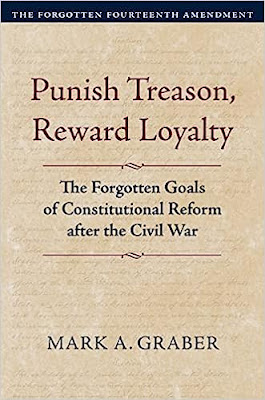
Mark A. Graber, Punish Treason, Reward Loyalty: The Forgotten Goals of Constitutional Reform after the Civil War (University of Kansas Press, 2023)
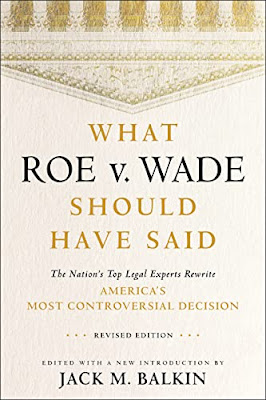
Jack M. Balkin, What Roe v. Wade Should Have Said: The Nation's Top Legal Experts Rewrite America's Most Controversial Decision - Revised Edition (NYU Press, 2023)

Andrew Koppelman, Burning Down the House: How Libertarian Philosophy Was Corrupted by Delusion and Greed (St. Martin’s Press, 2022)

Gerard N. Magliocca, Washington's Heir: The Life of Justice Bushrod Washington (Oxford University Press, 2022)
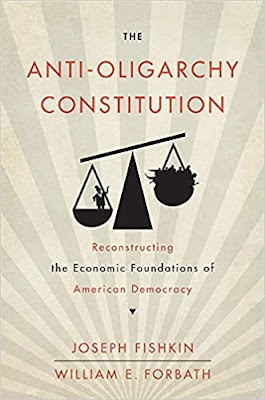
Joseph Fishkin and William E. Forbath, The Anti-Oligarchy Constitution: Reconstructing the Economic Foundations of American Democracy (Harvard University Press, 2022)
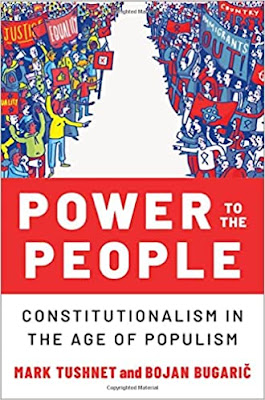
Mark Tushnet and Bojan Bugaric, Power to the People: Constitutionalism in the Age of Populism (Oxford University Press 2021).

Mark Philip Bradley and Mary L. Dudziak, eds., Making the Forever War: Marilyn B. Young on the Culture and Politics of American Militarism Culture and Politics in the Cold War and Beyond (University of Massachusetts Press, 2021).

Jack M. Balkin, What Obergefell v. Hodges Should Have Said: The Nation's Top Legal Experts Rewrite America's Same-Sex Marriage Decision (Yale University Press, 2020)

Frank Pasquale, New Laws of Robotics: Defending Human Expertise in the Age of AI (Belknap Press, 2020)

Jack M. Balkin, The Cycles of Constitutional Time (Oxford University Press, 2020)

Mark Tushnet, Taking Back the Constitution: Activist Judges and the Next Age of American Law (Yale University Press 2020).

Andrew Koppelman, Gay Rights vs. Religious Liberty?: The Unnecessary Conflict (Oxford University Press, 2020)

Ezekiel J Emanuel and Abbe R. Gluck, The Trillion Dollar Revolution: How the Affordable Care Act Transformed Politics, Law, and Health Care in America (PublicAffairs, 2020)

Linda C. McClain, Who's the Bigot?: Learning from Conflicts over Marriage and Civil Rights Law (Oxford University Press, 2020)
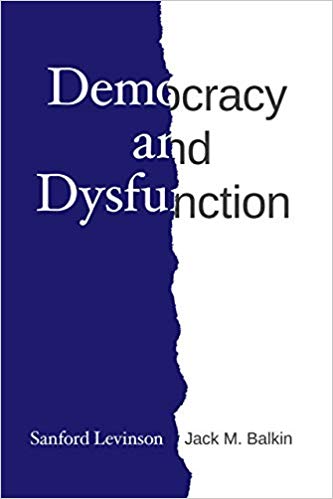
Sanford Levinson and Jack M. Balkin, Democracy and Dysfunction (University of Chicago Press, 2019)

Sanford Levinson, Written in Stone: Public Monuments in Changing Societies (Duke University Press 2018)

Mark A. Graber, Sanford Levinson, and Mark Tushnet, eds., Constitutional Democracy in Crisis? (Oxford University Press 2018)

Gerard Magliocca, The Heart of the Constitution: How the Bill of Rights became the Bill of Rights (Oxford University Press, 2018)

Cynthia Levinson and Sanford Levinson, Fault Lines in the Constitution: The Framers, Their Fights, and the Flaws that Affect Us Today (Peachtree Publishers, 2017)

Brian Z. Tamanaha, A Realistic Theory of Law (Cambridge University Press 2017)

Sanford Levinson, Nullification and Secession in Modern Constitutional Thought (University Press of Kansas 2016)

Sanford Levinson, An Argument Open to All: Reading The Federalist in the 21st Century (Yale University Press 2015)

Stephen M. Griffin, Broken Trust: Dysfunctional Government and Constitutional Reform (University Press of Kansas, 2015)

Frank Pasquale, The Black Box Society: The Secret Algorithms That Control Money and Information (Harvard University Press, 2015)

Bruce Ackerman, We the People, Volume 3: The Civil Rights Revolution (Harvard University Press, 2014)
Balkinization Symposium on We the People, Volume 3: The Civil Rights Revolution

Joseph Fishkin, Bottlenecks: A New Theory of Equal Opportunity (Oxford University Press, 2014)

Mark A. Graber, A New Introduction to American Constitutionalism (Oxford University Press, 2013)

John Mikhail, Elements of Moral Cognition: Rawls' Linguistic Analogy and the Cognitive Science of Moral and Legal Judgment (Cambridge University Press, 2013)

Gerard N. Magliocca, American Founding Son: John Bingham and the Invention of the Fourteenth Amendment (New York University Press, 2013)

Stephen M. Griffin, Long Wars and the Constitution (Harvard University Press, 2013)

Andrew Koppelman, The Tough Luck Constitution and the Assault on Health Care Reform (Oxford University Press, 2013)

James E. Fleming and Linda C. McClain, Ordered Liberty: Rights, Responsibilities, and Virtues (Harvard University Press, 2013)
Balkinization Symposium on Ordered Liberty: Rights, Responsibilities, and Virtues

Andrew Koppelman, Defending American Religious Neutrality (Harvard University Press, 2013)

Brian Z. Tamanaha, Failing Law Schools (University of Chicago Press, 2012)

Sanford Levinson, Framed: America's 51 Constitutions and the Crisis of Governance (Oxford University Press, 2012)

Linda C. McClain and Joanna L. Grossman, Gender Equality: Dimensions of Women's Equal Citizenship (Cambridge University Press, 2012)

Mary Dudziak, War Time: An Idea, Its History, Its Consequences (Oxford University Press, 2012)

Jack M. Balkin, Living Originalism (Harvard University Press, 2011)

Jason Mazzone, Copyfraud and Other Abuses of Intellectual Property Law (Stanford University Press, 2011)

Richard W. Garnett and Andrew Koppelman, First Amendment Stories, (Foundation Press 2011)

Jack M. Balkin, Constitutional Redemption: Political Faith in an Unjust World (Harvard University Press, 2011)

Gerard Magliocca, The Tragedy of William Jennings Bryan: Constitutional Law and the Politics of Backlash (Yale University Press, 2011)

Bernard Harcourt, The Illusion of Free Markets: Punishment and the Myth of Natural Order (Harvard University Press, 2010)

Bruce Ackerman, The Decline and Fall of the American Republic (Harvard University Press, 2010)
Balkinization Symposium on The Decline and Fall of the American Republic

Ian Ayres. Carrots and Sticks: Unlock the Power of Incentives to Get Things Done (Bantam Books, 2010)

Mark Tushnet, Why the Constitution Matters (Yale University Press 2010)
Ian Ayres and Barry Nalebuff: Lifecycle Investing: A New, Safe, and Audacious Way to Improve the Performance of Your Retirement Portfolio (Basic Books, 2010)
.jpg)
Jack M. Balkin, The Laws of Change: I Ching and the Philosophy of Life (2d Edition, Sybil Creek Press 2009)

Brian Z. Tamanaha, Beyond the Formalist-Realist Divide: The Role of Politics in Judging (Princeton University Press 2009)
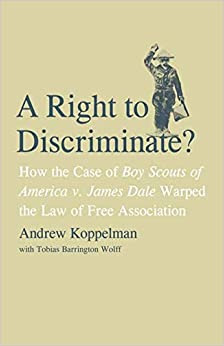
Andrew Koppelman and Tobias Barrington Wolff, A Right to Discriminate?: How the Case of Boy Scouts of America v. James Dale Warped the Law of Free Association (Yale University Press 2009)

Jack M. Balkin and Reva B. Siegel, The Constitution in 2020 (Oxford University Press 2009)
Heather K. Gerken, The Democracy Index: Why Our Election System Is Failing and How to Fix It (Princeton University Press 2009)

Mary Dudziak, Exporting American Dreams: Thurgood Marshall's African Journey (Oxford University Press 2008)

David Luban, Legal Ethics and Human Dignity (Cambridge Univ. Press 2007)

Ian Ayres, Super Crunchers: Why Thinking-By-Numbers is the New Way to be Smart (Bantam 2007)

Jack M. Balkin, James Grimmelmann, Eddan Katz, Nimrod Kozlovski, Shlomit Wagman and Tal Zarsky, eds., Cybercrime: Digital Cops in a Networked Environment (N.Y.U. Press 2007)
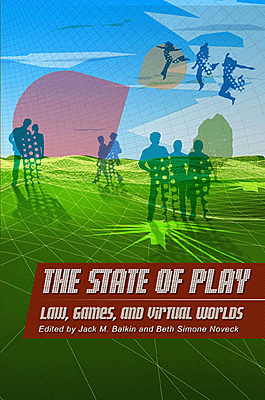
Jack M. Balkin and Beth Simone Noveck, The State of Play: Law, Games, and Virtual Worlds (N.Y.U. Press 2006)

Andrew Koppelman, Same Sex, Different States: When Same-Sex Marriages Cross State Lines (Yale University Press 2006)
Brian Tamanaha, Law as a Means to an End (Cambridge University Press 2006)
Sanford Levinson, Our Undemocratic Constitution (Oxford University Press 2006)
Mark Graber, Dred Scott and the Problem of Constitutional Evil (Cambridge University Press 2006)
Jack M. Balkin, ed., What Roe v. Wade Should Have Said (N.Y.U. Press 2005)
Sanford Levinson, ed., Torture: A Collection (Oxford University Press 2004)
Balkin.com homepage
Bibliography
Conlaw.net
Cultural Software
Writings
Opeds
The Information Society Project
BrownvBoard.com
Useful Links
Syllabi and Exams
